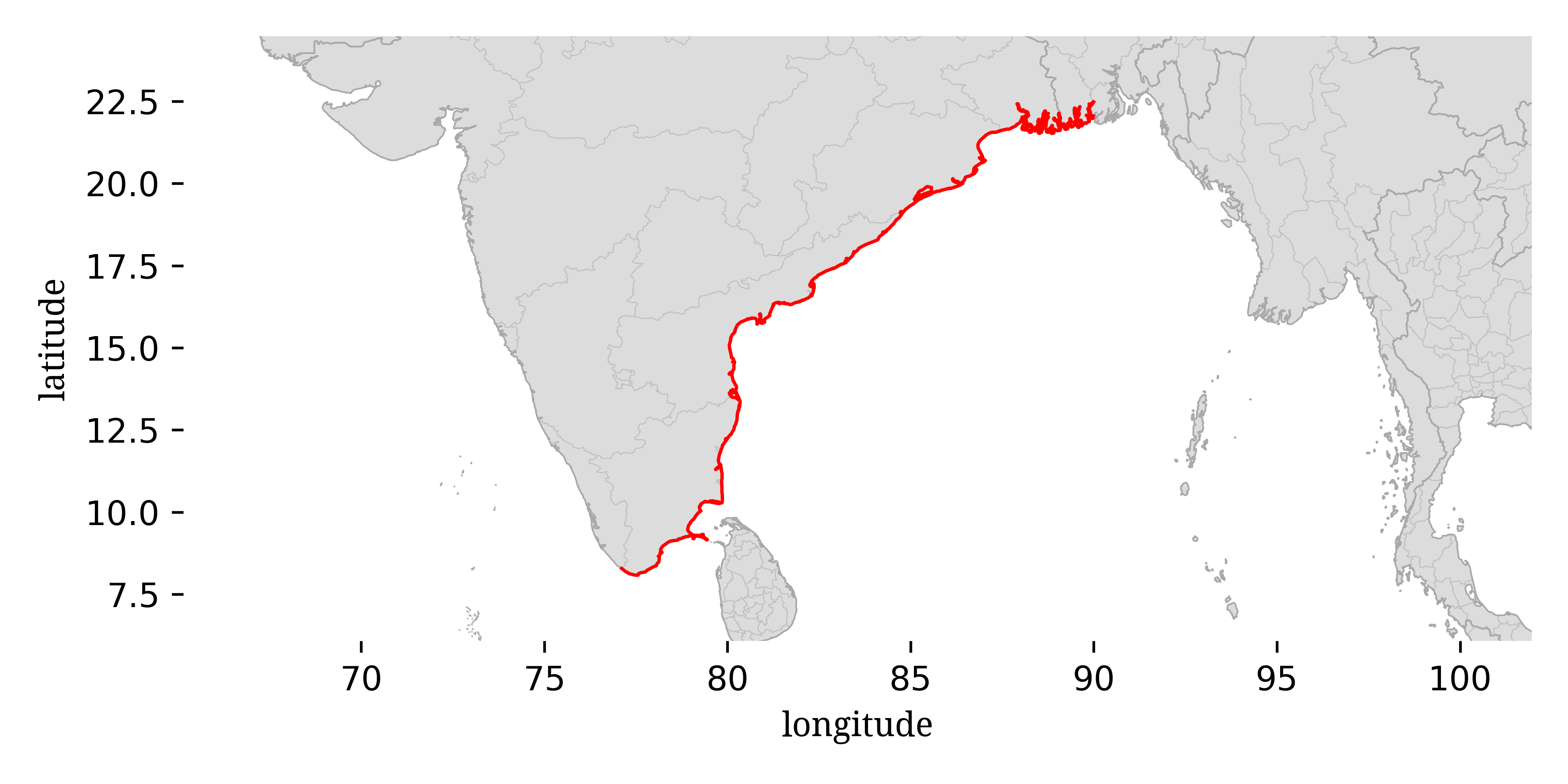
This guide is designed for identification “in the field” where you might be looking at live crabs by eye or through binoculars or from photographs. I will generally try to avoid characters that will require you to physically catch the crab, although I may mention a few for secondary verification. It does not include the more strict taxonomist-style characters that may only be visible under a microscope or via dissection. It is also assumed that the individuals are living, as death (and even capture) can cause dramatic color change.

This is a guide to the fiddler crabs of the east coast of continental India (from the state of Tamil Nadu to West Bengal) and Bangladesh, including five species:
Four of these species should be found throughout most of the range, although there are some possible distribution gaps for a few of them around Odisha. Tubuca rosea is only found in the northeast part of the area and is not found south of Odisha. There are scattered records of a sixth species, Tubuca paradussumieri in the northern part of this region. In appearance it is extremely similar to Tubuca alcocki; I am not including it in the guide at this time, but detailed differences between the two species can be found in the guide to the Western Malay Peninsula.
A number of features can be used to distinguish among these species, but a good place to start is to look at the distance between the base of the eyestalks. Fiddler crabs tend to split into two groups, those with the eyestalks very close together (“narrow front”) and those with the eyestalks separated a bit more (“broad front”). Two of these species (Austruca annulipes and Austruca variegata) are broad front species, while the other three (Gelasimus hesperiae, Tubuca alcocki, and Tubuca rosea) are narrow front species.
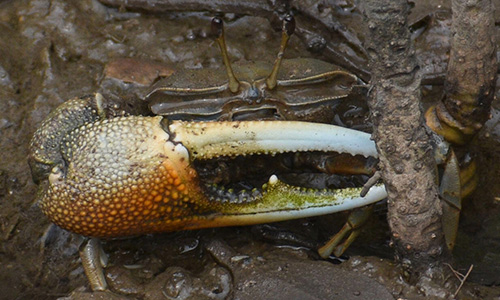
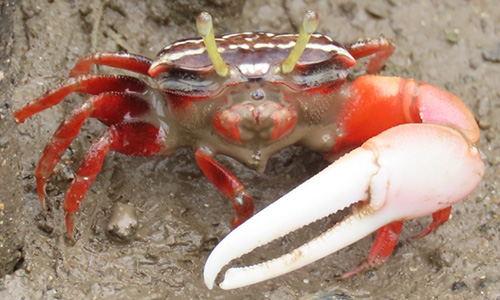
Tubuca alcocki is one of the two common narrow front species on the east coast of India, but should be easy to identify as it is distinct in both color and form. Adult Tubuca alcocki tend to have solid colored, dull, dark blue or brown carapaces, with a large claw with pale, off-white fingers, and a darker hand in dull brown or orange.
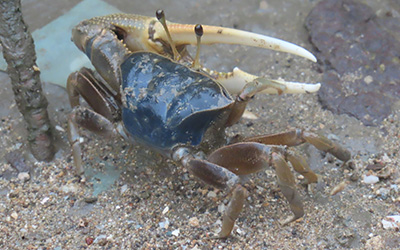
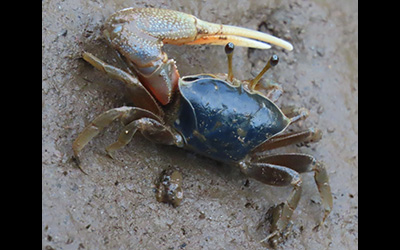
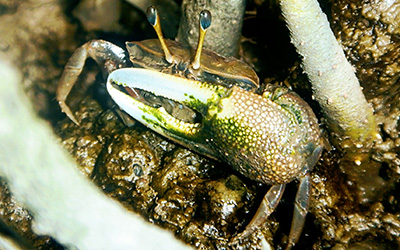

Younger and smaller Tubuca alcocki tend to be much more brightly colored. Their carapace may be more molted, rather than a single solid color, with bright blues, blacks, and some white mixed together. The colors on the large claw are also frequently brighter in color than those on the largest adults.
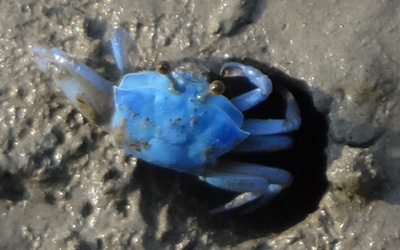

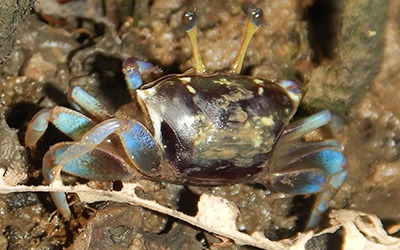
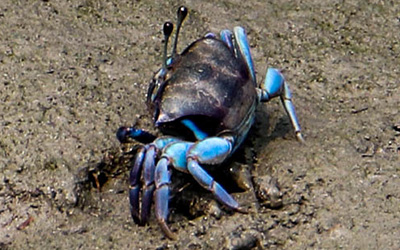
The fingers of the large claw tend to be much straighter and less curved than in the other species, frequently with noticable grooves along them. In the largest individuals, the fingers may be extremely long relative to the size of the hand.
Gelasimus hesperiae is a narrow front species with a white or pale greenish-brown carapace and a distinctively shaped large claw. It never has any blue and should be readily distinguishable from all of the other species. The dactyl on the large claw is usually white or pink, while the rest of the claw usually ranges from orange to pale yellow. The dactyl is relatively thick and straight for about half its length before clearly curving to a thick point. The pollex will frequently have two very clear large teeth, one about midway along the length and one near the tip, although one or both can be absent. Like Tubuca alcocki, it has large bumps (tubercles) on the hand of the claw and will often have a noticeable groove along the base of the pollex.
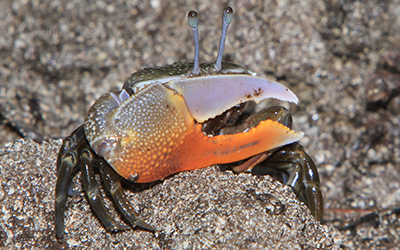
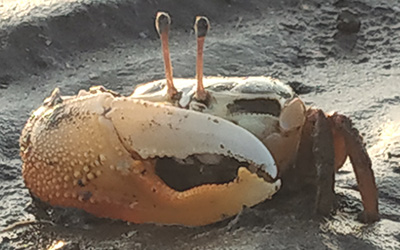
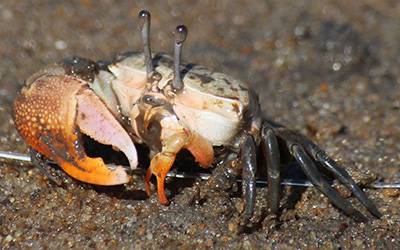
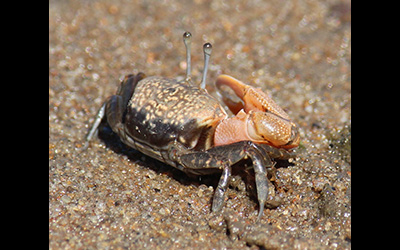
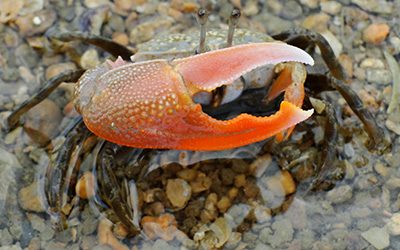
Tubuca rosea tends to be one of the more distinctively colored species. Its carapace is generally semi-translucent, frequently a pale blue or rose red (or both). Its limbs and large claw are generally rose red, with the fingers of the claw a bit paler.
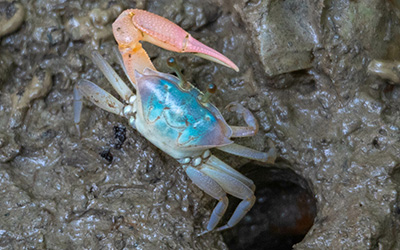
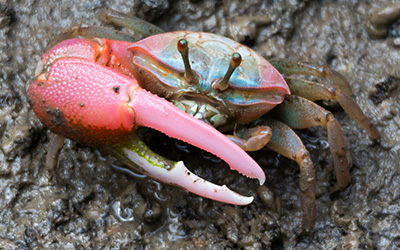

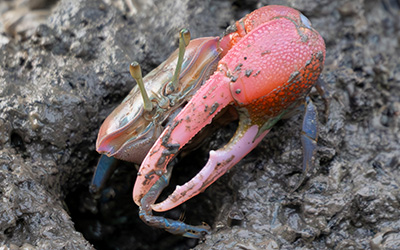
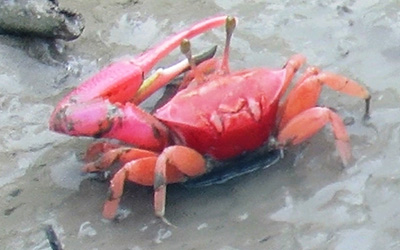
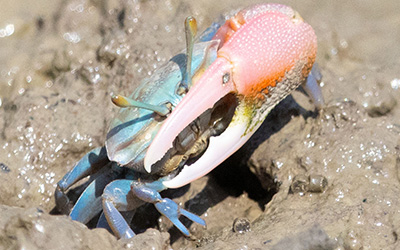
Austruca annulipes is a common, wide-spread species. Generally, the carapace of Austruca annulipes tends to be a mix of black and white. The large arm of Austruca annulipes is generally orange or red, with some of the color frequently found on the hand of the claw as well.
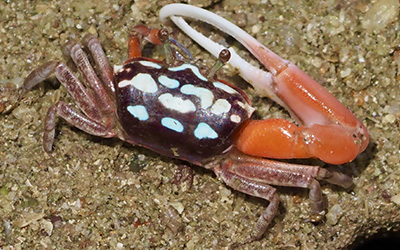
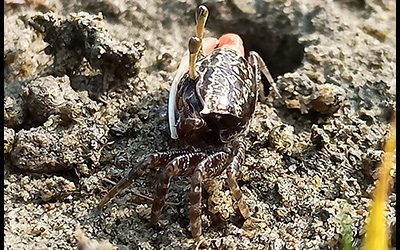
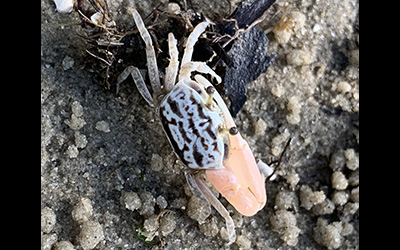
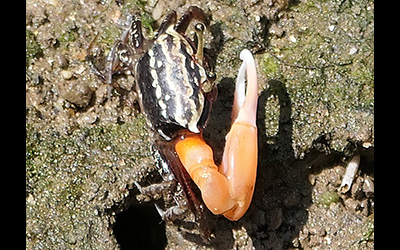
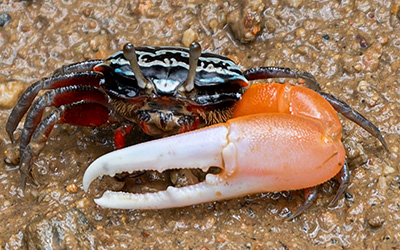
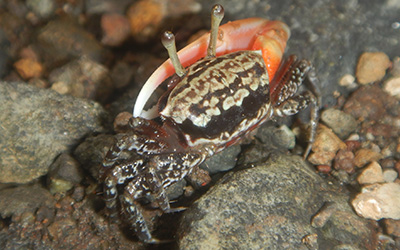
A fairly small species, Austruca variegata is easy to identify by color, as it almost always includes bright yellow. Its carapace is tends to be either a mix of blue, yellow, or white with black, or a solid yellow or white. Its large claw is almost always solid yellow.
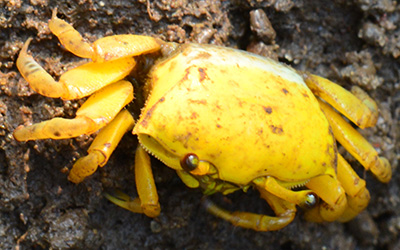
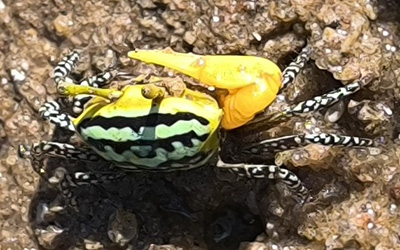

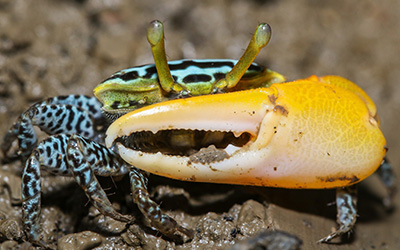
In addition to color, Austruca variegata has a distinctive carapace shape when seen from above. The front corners of the carapace are particularly pointed and the sides of the carapace slope inward at a much sharper angle than most of the other species found in the same area. Tubuca rosea has a somewhat simlar shaped carapace, but is a narrow front species and very different colors.